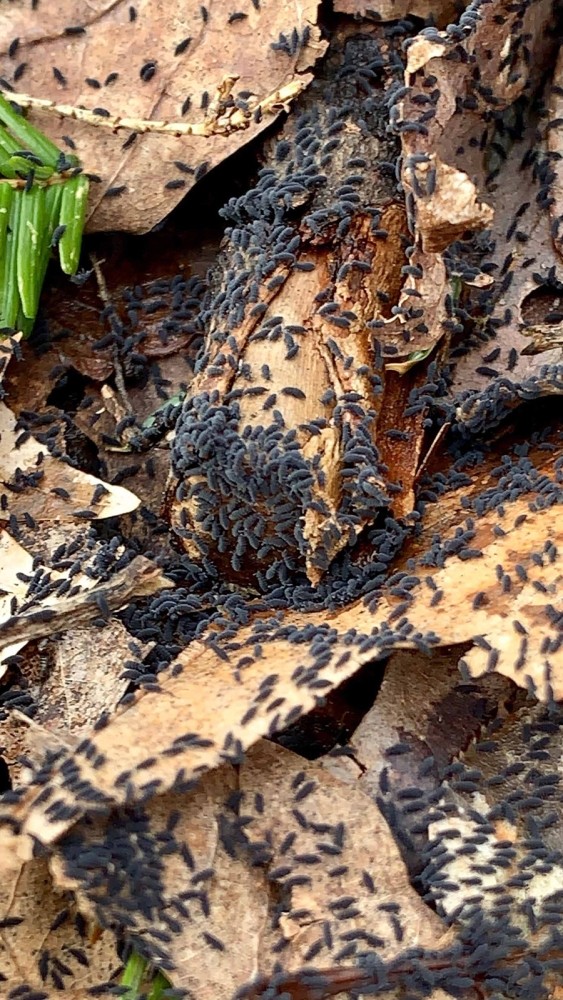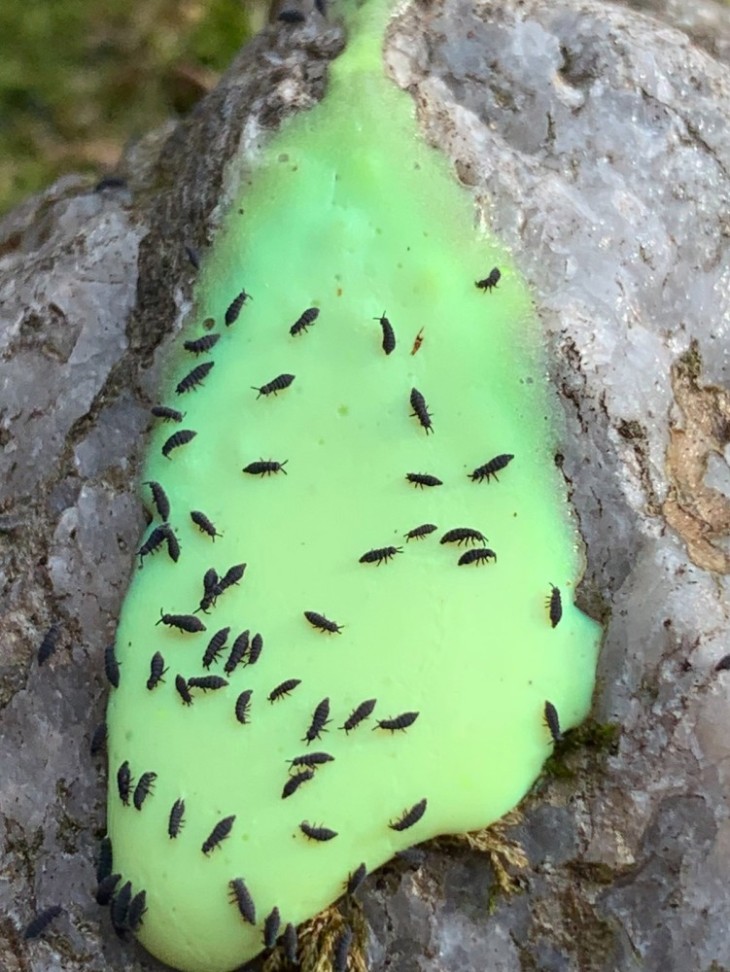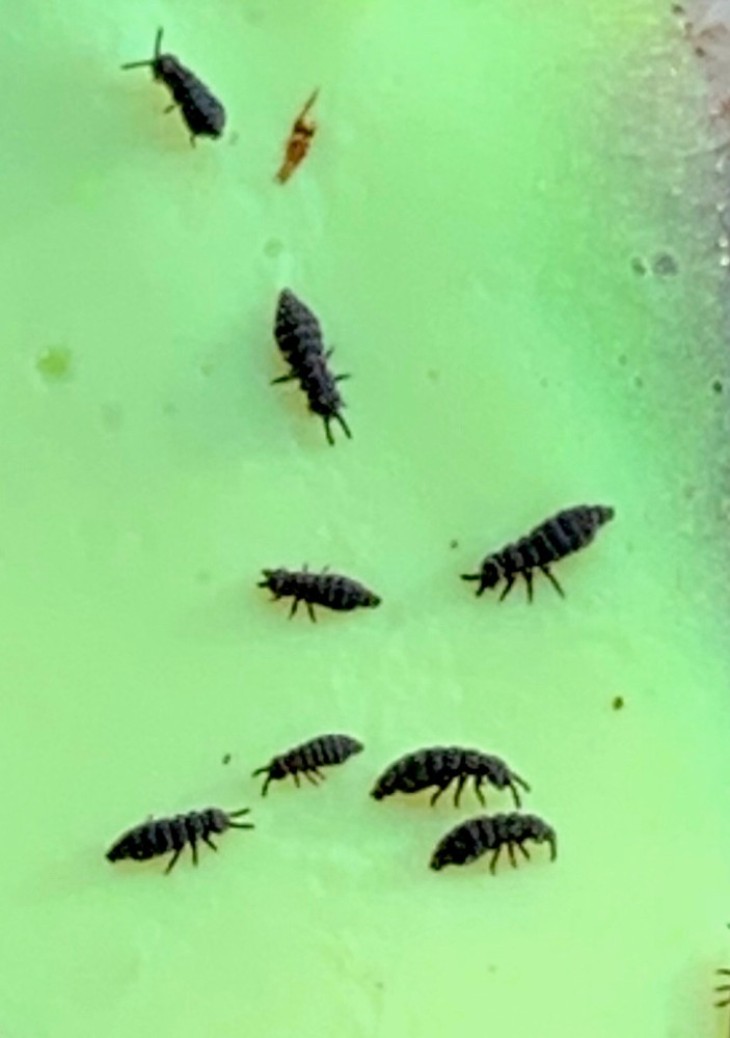This past week, as I was sorting through submissions to our Readers Photo Gallery, I came upon this macro shot of springtails. These not-quite-insects (class Collembola) have an ancient pedigree and a novel means of locomotion – their “tails,” or furculae, serve as built-in catapults. For a good description of how this works, see this 2008 article by Bill Amos. He compares the furcula to the bar in an upside-down mousetrap – imagine what happens when the bar is triggered, and snap, the whole trap pops into the air.
Springtails are tiny – the biggest among them are mere millimeters long – and although they’re abundant pretty much everywhere, they’re easy to overlook. The exception is in early spring, when they are sometimes visible on top of snow. Jane Schlossberg, who sent in the gallery photo, offered this description of springtails in their “snow flea” form: “every footstep and depression…becomes filled with what looks like a vibrating five o’clock shadow.”
Jane explained to me that she has been documenting springtails and other small creatures with the phone that she carries into her woods. Nature observation is a lifelong joy for her; she has a degree in ecology and wildlife biology, and her professional life has included research on a variety of species – including alligators in Georgia’s Okefenokee Swamp. These days, she’s fully engrossed in her own 84 acres on Pritchard Mountain in western Vermont. It’s a rugged property (“schist happens”) embedded within a much greater forested landscape. One of her favorite activities is solitary night hikes. She marks her trails with glow-in-the-dark paint, and it’s this practice that led to these additional photos:
“A half hour after dabbling some of the paint here and there, I noticed each blob was adorned with snow fleas that had become stuck in the paint. Kind of like modern day amber,” she said. While the springtails eventually sprang to freedom, they were trapped long enough for some photographs in which their dark forms were nicely articulated against the glowing green.
You don’t need snow, or glowing paint, to observe these creatures. As Jane notes, springtails are visible, and audible, most of the year, if you take the time to seek them out in the soil and leaf litter. “If you crouch low and listen, you can hear the snapping sounds as they propel themselves aimlessly and land, often in a pile of other springtails,” she said.
We have a number of articles about springtails in our online archive. Click here for the strange tale of their relationship to “meat-eating” trees, and here for a description of how they, and other small creatures, help to recycle forest detritus.




